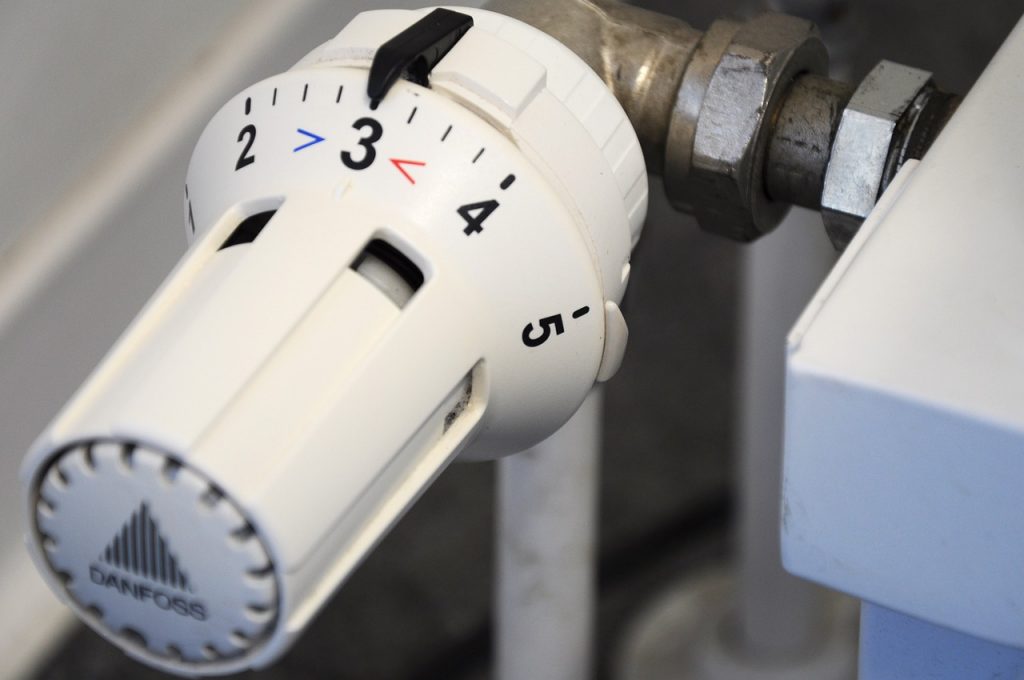Insulating one’s home is among the most efficacious methods of reducing energy consumption and lowering heating bills. The addition of insulation to walls, loft, and floors prevents heat from escaping, maintaining warmth and comfort within the dwelling. Insulation serves as a barrier to heat flow and aids in maintaining a consistent internal temperature, thus reducing the necessity for constant heating.
Various types of insulation are available, including glass fibre, cellulose, and foam, each offering distinct benefits and R-values. Proper insulation not only assists in keeping a home warm during winter but also cool in summer, rendering it a worthwhile investment for year-round energy savings. In addition to installing insulation, it is crucial to ensure that windows and doors are properly sealed to prevent air leakage.
Draught-proofing and caulking can effectively seal gaps and cracks, reducing draughts and improving the overall energy efficiency of the home. By insulating and sealing one’s dwelling, a more comfortable living environment can be created whilst reducing both carbon footprint and energy costs.
Summary
- Insulating your home can help reduce heat loss and save on energy bills.
- Using programmable thermostats can help regulate the temperature in your home more efficiently.
- Sealing drafts and leaks can prevent heat from escaping and cold air from entering your home.
- Utilising sunlight by opening curtains during the day can help warm up your home naturally.
- Using energy-efficient appliances can significantly reduce energy consumption and lower your bills.
- Layering up and lowering the thermostat by just a few degrees can make a big difference in energy usage.
- Considering renewable energy sources such as solar panels or wind turbines can further reduce your carbon footprint.
Use Programmable Thermostats
Installing a programmable thermostat is a simple yet effective way to save energy and reduce heating costs. These devices allow you to set different temperatures for specific times of the day, so you can lower the heat when you’re away or asleep and raise it when you’re at home and awake. By automatically adjusting the temperature based on your schedule, programmable thermostats help to avoid unnecessary heating and ensure that your home is always at a comfortable temperature when needed.
There are various types of programmable thermostats available, including basic models with weekday and weekend programming options, as well as more advanced smart thermostats that can be controlled remotely via a smartphone app. Smart thermostats can also learn your heating preferences and make automatic adjustments to maximise energy savings. By using a programmable thermostat, you can reduce energy consumption, lower your heating bills, and enjoy a more convenient and comfortable home environment.
Seal Drafts and Leaks

Sealing drafts and leaks in your home is a crucial step in improving energy efficiency and reducing heating costs. Gaps around windows, doors, and other openings can allow cold air to enter and warm air to escape, making your heating system work harder to maintain a comfortable temperature. Weatherstripping and caulking are effective solutions for sealing these gaps and preventing drafts, helping to keep your home warm and energy-efficient.
In addition to sealing windows and doors, it’s important to check for drafts in other areas of your home, such as around electrical outlets, pipes, and vents. Adding insulation to these areas can further improve energy efficiency and reduce heat loss. By sealing drafts and leaks, you can create a more comfortable living environment, lower your heating bills, and reduce your carbon footprint.
Utilise Sunlight
| Location | Sunlight Hours per Day | Percentage of Sunlight Utilised |
|---|---|---|
| London | 4.5 | 60% |
| Manchester | 3.8 | 45% |
| Edinburgh | 3.2 | 50% |
Making the most of natural sunlight is a simple yet effective way to reduce heating costs and improve energy efficiency in your home. Opening curtains and blinds during the day allows sunlight to enter your home and naturally warm the interior spaces. This passive solar heating can help reduce the need for artificial heating and lower energy consumption during daylight hours.
To maximise the benefits of sunlight, consider using light-coloured window treatments that reflect heat back into the room while still allowing natural light to enter. Additionally, strategically planting trees or installing exterior shading devices can help block direct sunlight during the summer months, reducing the need for air conditioning. By utilising sunlight as a free source of heat, you can lower your energy bills, reduce your environmental impact, and create a more comfortable living environment.
Use Energy-Efficient Appliances
Investing in energy-efficient appliances is a smart way to reduce energy consumption and lower your heating bills. When shopping for new appliances, look for models with the ENERGY STAR label, which indicates that they meet strict energy efficiency guidelines set by the Environmental Protection Agency. ENERGY STAR-certified appliances use less energy than standard models, helping you save money on utility bills while reducing your environmental impact.
In addition to choosing energy-efficient appliances, it’s important to use them wisely to maximise energy savings. For example, washing clothes in cold water, using the dishwasher only when it’s full, and air-drying dishes and laundry can all help reduce energy consumption. By using energy-efficient appliances and adopting smart usage habits, you can lower your heating bills and contribute to a more sustainable future.
Layer Up and Lower the Thermostat

One of the simplest ways to reduce heating costs is to lower the thermostat and wear warmer clothing indoors. By lowering the temperature by just a few degrees and layering up with sweaters, blankets, and warm socks, you can stay comfortable while consuming less energy. Additionally, using ceiling fans on a low setting can help circulate warm air throughout the room, making it feel warmer without increasing the thermostat setting.
During the night or when you’re away from home, consider lowering the thermostat even further to save on heating costs. Programmable thermostats make it easy to schedule temperature adjustments based on your daily routine, ensuring that you’re not wasting energy when it’s not needed. By layering up and lowering the thermostat, you can reduce energy consumption, lower your heating bills, and make a positive impact on the environment.
Consider Renewable Energy Sources
For homeowners looking to further reduce their reliance on traditional heating systems, renewable energy sources such as solar panels or geothermal heat pumps can be viable options. Solar panels harness the power of the sun to generate electricity or heat water for space heating, while geothermal heat pumps use the stable temperature of the earth to provide heating and cooling for homes. While the initial investment in renewable energy systems can be significant, they offer long-term benefits in terms of energy savings and environmental impact.
In many cases, homeowners can also take advantage of government incentives and rebates to offset the cost of installing renewable energy systems. By considering renewable energy sources for your home heating needs, you can reduce your carbon footprint, lower your reliance on fossil fuels, and enjoy sustainable energy solutions for years to come. In conclusion, there are numerous ways to improve energy efficiency and reduce heating costs in your home.
From insulating and sealing drafts to utilising sunlight and using energy-efficient appliances, making small changes can lead to significant savings over time. By adopting these energy-saving practices, homeowners can create a more comfortable living environment while also contributing to a more sustainable future for our planet. Whether it’s through simple lifestyle adjustments or investing in renewable energy solutions, every effort towards reducing heating costs makes a positive impact on both our wallets and the environment.
If you’re looking for more ways to save money and energy in the winter, you might want to check out this article on heat pumps. Heat pumps are an efficient way to heat your home and can help reduce your energy bills during the colder months. They are a great investment for creating an eco-friendly home and can contribute to sustainable living.
FAQs
What are some energy-saving strategies for winter?
Some energy-saving strategies for winter include sealing drafts, using a programmable thermostat, insulating your home, and using energy-efficient appliances and lighting.
How can sealing drafts help save energy in winter?
Sealing drafts can help save energy in winter by preventing warm air from escaping and cold air from entering your home. This can reduce the need for heating and lower your energy bills.
Why is using a programmable thermostat an energy-saving strategy for winter?
Using a programmable thermostat allows you to set lower temperatures when you are away or asleep, reducing the amount of energy used for heating. This can lead to cost savings on your energy bills.
How does insulating your home help save energy in winter?
Insulating your home can help save energy in winter by reducing heat loss and improving the efficiency of your heating system. This can result in lower energy consumption and reduced heating costs.
What are some energy-efficient appliances and lighting options for winter?
Energy-efficient appliances and lighting options for winter include LED light bulbs, ENERGY STAR certified appliances, and using appliances and lighting only when needed to reduce energy consumption and save money.


